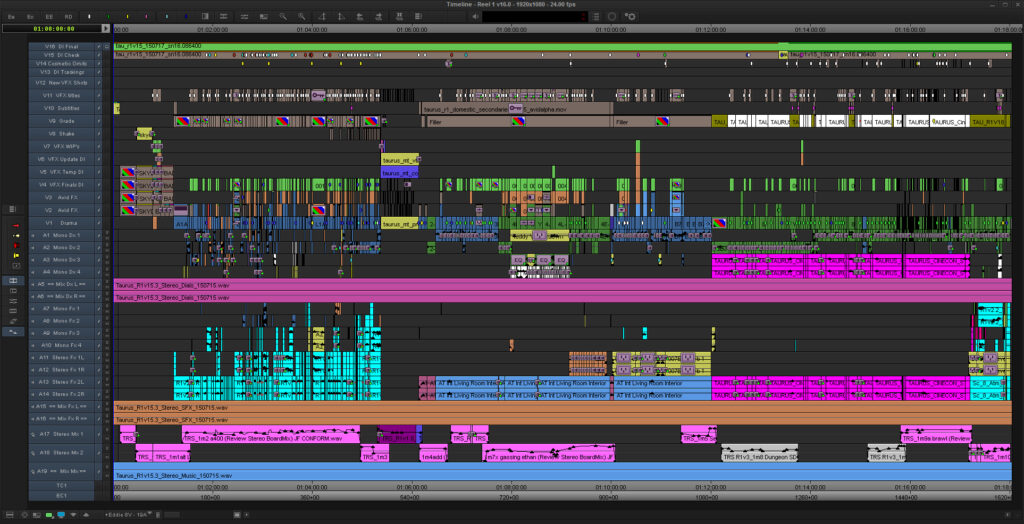It was Francis Ford Coppola who said, “The essence of cinema is editing.” If you’re an aspiring film editor, you know your craft matters — and you know it also matters how you speak and think about your craft using common film editing terms.
Video Editing Terms: An Overview
Have you ever seen a video and wished you could create one just as engaging? Great video editors are talented storytellers. At NYFA, you not only become fluent in editing software, but also learn to tell engaging stories.
We’ve compiled a guide to help you beef up your understanding of film editing terms and learn to communicate about editing like a pro. The following are some fundamental terms that editors should know:
Cut
A transition where one shot is instantly followed by another.
Continuity Editing
Visual editing where shots are cut together in a clear and linear flow of uninterrupted action. This type of cutting seeks to maintain a continuous sense of time and space.
Continuity Error
When the action or elements of a scene don’t match across shots. For example, when a character breaks a glass window but in a later shot the window is shown undamaged.
Cross Cutting
Technique used to give the illusion that two story lines of action are happening at the same time by rapidly cutting back and forth between them.
Cutaway
The interruption of a continuously filmed action with a shot that’s peripherally related to the principal action.
Dissolve
When the end of one shot overlaps the start of the next one to create a gradual scene transition.
Editing
The process of taking raw footage to select and combine shots to create a complete motion picture.
Establishing Shot
A shot that gives viewers an idea of where the scene is taking place. These usually involve a shot from a long distance, such as a bird’s eye view.
Eyeline Match
A technique based on the idea that viewers want to see what on-screen characters are seeing. For example, if a character is looking intently at an off-screen object, the following shot will be of that object.
Fade
A visual effect used to indicate a change in place and time. This involves a gradual brightening as a shot opens or a gradual darkening as the shot goes black or to another color. Sound also fades in and out to convey the change.
Iris
A wipe that takes the shape of a shrinking or growing circle, depending on if the scene is opening or ending. Rarely used today but very common during the silent era.
J Cuts
An editing technique that allows the audience to first hear audio from a shot, and then see it.
Jump Cut
An abrupt cut that creates a lack of continuity between shots by leaving out parts of the action.
L Cut
When the audio from the preceding scene continues to play over the footage from the following scene.
Matched Cut
A cut joining two shots with matching compositional elements. This helps to establish strong continuity of action. One of the more notable examples of this technique is from a famous scene in “2001: A Space Odyssey.”
Montage
A sequence of shots assembled in juxtaposition of one another to create an emotional impact, condense a story, or convey an idea. A famous example is “Psycho’s” shower scene. WARNING: This scene contains graphic violent content and may be disturbing.
Roll
Graphics or text that moves up or down the screen. This technique is typically used for credits by having text move from bottom to top.
Rough Cut
The first editing pass done for a film. (The former sentence is not entirely accurate as an Assembly Cut is the first editing pass done for a film, but it depends on how one defines editing, so I think this is o.k.). A rough cut receives further polishing and editing before making its way out to audiences.
Sequence Shot
A long take composed of one shot that extends for an entire scene or sequence. Usually requires complex camera movements and action.
Shot Reverse Shot
The alternating of over-the-shoulder-shots, usually used during a conversation between two characters.
Sweetening
The process of adding sound effects and music and/or enhancing the existing audio with effects.
Wipe
The transition from one shot to another with a visible pattern or element. No longer used in today’s films but very common in early cinema.
Getting an Introduction to Film Editing
As an aspiring filmmaker, film editing is one of the most important skills to learn. At NYFA, you can immerse yourself in the world of digital editing with our full-time and part-time intensive editing workshops. In these hands-on programs, students learn the fundamentals of storytelling and gain an understanding of film editing terms and technical editing techniques. We currently offer in-person and online programs in AVID Media Composer and Adobe Premiere Pro.
To learn more about taking workshops in digital editing, see our digital editing workshops at NYFA New York City.
